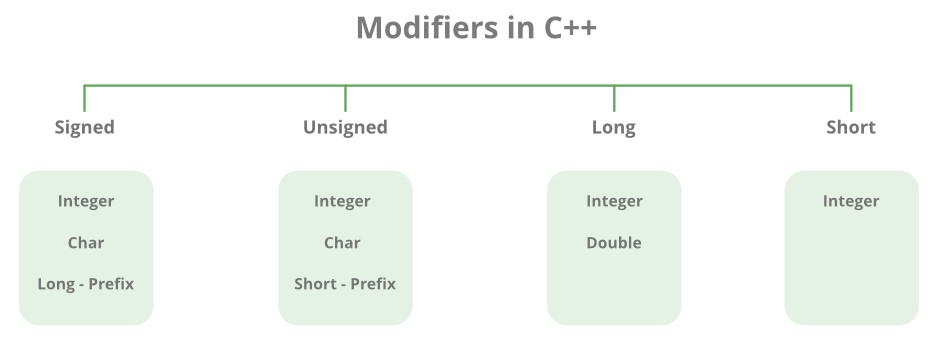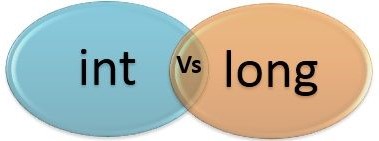Choosing the right data type is a fundamental step in programming that significantly impacts the functionality and efficiency of an application. Data types serve as the building blocks of software development, enabling programmers to allocate the correct form of data storage for their variables. The distinction between integer (int) and long integer (long) data types is a critical consideration, especially when it comes to handling numbers in programming.
The primary difference between int and long lies in their capacity to store numerical values. An int can store numbers from -2,147,483,648 to 2,147,483,647, making it suitable for a wide range of applications that do not require numbers outside this range. On the other hand, a long can store much larger numbers, from -9,223,372,036,854,775,808 to 9,223,372,036,854,775,807, providing an extended range for applications that handle large quantities or calculations.
Understanding when to use int and when to opt for long is not just a matter of range but also involves considerations of memory efficiency and performance optimization. While int is generally faster and more memory-efficient due to its smaller size, long becomes essential when dealing with large numbers that exceed the int range. This nuanced understanding is crucial for developers aiming to create robust, efficient, and error-free applications.

Data Types Explained
Definition and Role in Programming
Data types are foundational elements that specify the kind of data a variable can hold in a programming language. They are critical for allocating memory and performing data manipulation. Essentially, data types help ensure accuracy and efficiency in code execution by defining what operations can be performed on the data and how it is stored.
Categories of Data Types
Data types can be broadly categorized into:
- Primitive Data Types: These are basic types built into the programming language and include integers, booleans, and floating-point numbers.
- Composite Data Types: These types are made up of primitive data types or other composite types. Examples include arrays, structures, and classes.
- Special Data Types: This category includes types like void or pointers that have specific purposes in certain programming contexts.
Int Overview
Definition and Characteristics
The int data type is a primitive data type that represents whole numbers. It is one of the most commonly used data types for storing numerical values that do not require decimal points. The range of an int typically depends on the system architecture, but it is generally capable of storing values from -2,147,483,648 to 2,147,483,647.
Common Uses in Programming
Int is used extensively across various programming scenarios, including:
- Counting iterations in loops
- Managing indexes in arrays
- Performing arithmetic operations
- Handling statuses or error codes
Limits and Boundaries
The primary limit of the int data type is its fixed size, which restricts the range of values it can hold. This limitation is crucial to consider in applications where the value range might exceed its boundaries.
Advantages of Int
Speed and Efficiency
Int operations are fast and efficient because they align well with the hardware’s native processing capabilities, making them the preferred choice for most numerical operations.
Ideal Scenarios for Usage
The int data type is ideal for scenarios where:
- The numerical range is known and within its limits
- High performance is critical
- Memory usage needs to be minimized
Disadvantages of Int
Limitations in Range
The main disadvantage of int is its limited range, which can cause overflow errors in calculations exceeding its maximum or minimum values.
Long Overview
Definition and Characteristics
The long data type is an extended version of the int type, designed to store larger whole numbers. Like int, it is a primitive data type, but with a significantly larger range, typically from -9,223,372,036,854,775,808 to 9,223,372,036,854,775,807 on a 64-bit system.
When to Use Long Over Int
Long should be chosen over int when:
- The numerical values could exceed the
intrange - Working with large files or databases
- Dealing with scientific calculations or large time values
Limits and Boundaries
While long provides a much larger range than int, it also consumes more memory and can have a slower performance in some contexts due to its size.
Advantages of Long
Extended Range and Applications
The long data type’s extended range makes it suitable for applications that involve large numbers, such as financial calculations, big data processing, and handling timestamps.
Suitability for Specific Tasks
Long is particularly useful for tasks that require:
- High precision over large numeric ranges
- Storing and manipulating large quantities of data
- Ensuring that calculations remain accurate without overflow errors
Disadvantages of Long
Performance Implications
Due to its larger size, long can be slower to process than int, particularly in tight loops or when performing many calculations.
Resource Consumption
Long variables consume twice as much memory as int variables, which can be a significant consideration in resource-constrained environments or in applications that require a large number of numeric variables.

Int vs Long: Key Differences
Understanding the differences between int and long data types is crucial for effective programming and resource management. These differences impact how data is stored, processed, and the overall performance of an application.
Range Comparison
The most apparent difference between int and long is their value range. An int is typically 32 bits, accommodating values from -2,147,483,648 to 2,147,483,647. Conversely, a long is usually 64 bits, vastly increasing its range to -9,223,372,036,854,775,808 to 9,223,372,036,854,775,807. This fundamental distinction dictates their application in programming, particularly in scenarios requiring the handling of large numbers.
Memory Usage
Another key difference is in memory consumption. An int occupies 4 bytes of memory, while a long takes up 8 bytes. This means using a long data type will inherently consume more memory resources, an important consideration in environments with limited memory or when dealing with a large number of variables.
Performance Impact
Performance is also a significant factor influenced by the choice between int and long. Operations involving int data types are generally faster and more efficient, given their alignment with the CPU’s natural word size. On the other hand, long operations might be slower and less efficient, especially in critical sections of code like loops and intensive calculations, due to the increased data size and processing time.
Scenario-Based Comparison
Exploring specific scenarios can highlight the practical implications of choosing between int and long.
Short Scenarios Illustrating Choice Impact
- Loop Counters: Using
intfor loop counters in scenarios where the iteration does not exceed its maximum value ensures efficient memory use and performance. - Financial Calculations: For applications dealing with large financial numbers or calculations,
longis preferred to prevent overflow and maintain accuracy.
Case Studies
- Data Processing Application: A data processing system handling records numbering in the billions would require
longfor its counters to accurately represent the total count without risk of overflow. - Gaming Score System: A simple gaming score system, where scores are unlikely to exceed a few thousand, would be more efficiently handled using
int.
Selecting the Right Type
Choosing between int and long involves more than comparing ranges and memory usage; it requires a thoughtful analysis of the application’s specific needs.
Factors to Consider
- Expected Range of Data: Analyze the data your application will process. If values might exceed the
intrange, opt forlong. - Performance Requirements: For performance-critical applications, prefer
intwhere possible to leverage faster processing times. - Memory Constraints: In environments where memory is a limiting factor, use
intto minimize resource consumption.
Best Practices for Type Selection
- Know Your Data: Understand the nature and range of data your application will handle.
- Optimize for Performance: Use
intfor numeric operations within its range to benefit from speed and efficiency. - Plan for Scalability: Choose
longwhen designing systems that might need to handle larger data sets in the future.
Conversion Considerations
Converting between int and long is a common operation but comes with potential pitfalls.
Int to Long and Vice Versa
- Int to Long: This is generally safe as it involves widening conversion, moving from a smaller to a larger data type.
- Long to Int: This requires careful handling to avoid data loss. Ensure the
longvalue is within theintrange before conversion.
Potential Pitfalls and How to Avoid Them
- Data Loss: Always check the range before converting from
longtointto prevent data loss. - Overflow: Use proper checks or exception handling to manage overflow risks when narrowing data types.
Future-Proofing Code
Anticipating future requirements and designing code that remains robust over time is an essential aspect of software development.
Anticipating Data Type Needs
- Analyze Growth Trends: Look at data growth trends in your application to predict future needs.
- Design Flexibly: Use data types that can accommodate unexpected increases in data volume.
Scalability and Maintainability Tips
- Use Type Aliases: Create aliases for data types so you can easily change the underlying type globally if needed.
- Modular Design: Design your code in modular chunks to isolate changes to data types, simplifying updates and maintenance.
Frequently Asked Questions
Can I always use long instead of int?
While it might seem tempting to use long for all numerical variables to avoid overflow issues, it’s not always the best practice. Using long when int suffices increases memory usage unnecessarily, which can be particularly impactful in memory-constrained environments or in applications that instantiate a large number of objects. Therefore, it’s important to choose the data type that best fits the numerical range your application will handle.
How does the choice between int and long affect performance?
The choice between int and long can affect your application’s performance, especially in loops and calculations. Int operations are generally faster on most processors, mainly because they are the native size of integers the CPU is designed to handle efficiently. Using long when not necessary can lead to slower performance due to the increased data size, which requires more CPU cycles to process.
Is there a significant memory usage difference between int and long?
Yes, there is a notable difference in memory usage between int and long. An int typically occupies 4 bytes of memory, while a long usually occupies 8 bytes. This means that using a long over an int doubles the amount of memory required to store a number. For applications that utilize a large number of numeric variables, carefully choosing between these two data types can significantly impact overall memory consumption.
When should I specifically use long data type?
The long data type should be used when you anticipate the range of the numerical values could exceed the maximum or minimum values that an int can hold. This is particularly important in applications that deal with large quantities, such as financial calculations involving high precision and large sums, or when working with system timestamps, which often exceed the int range.
Conclusion
The decision between using int and long is more than just a technicality; it’s a strategic choice that affects both the performance and the accuracy of your application. By understanding the capacities, limitations, and appropriate contexts for each data type, developers can make informed decisions that optimize their programs for both speed and memory efficiency.
Ultimately, the choice between int and long should be guided by the specific needs of your application, considering both the range of data it will process and the resources available. By carefully evaluating these factors, you can ensure that your application remains robust and efficient, capable of handling its numeric data effectively and without compromise.

